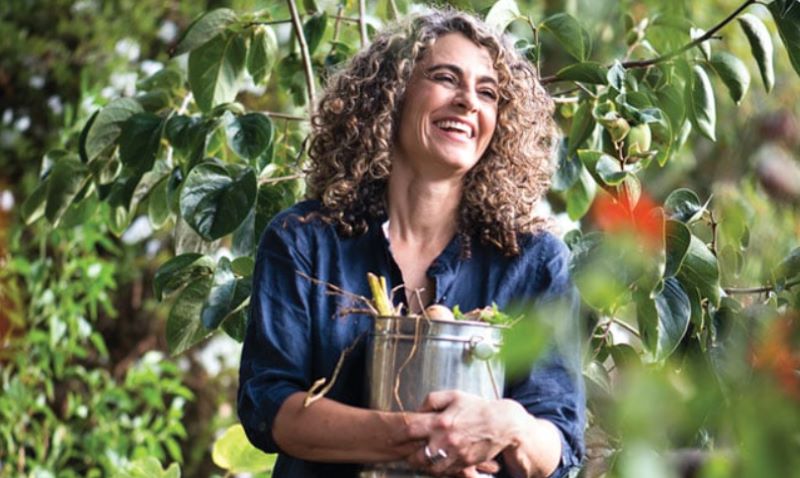
Enjoying a cup of coffee or performing an act of kindness are some examples of the everyday ‘micro-joys’ that can boost your wellbeing.

By Dr. Jolanta Burke
Senior Lecturer, Centre for Positive Health Sciences
RCSI University of Medicine and Health Sciences
Find joy in the little things. This piece of folk advice has been around for aeons, and is one that many of us try to live by. But is there actually any real benefit to this practice?
According to research, yes, there is indeed some benefit to savouring fleeting moments of joy – also known as “micro-joys”. Whether that’s relishing a cup of coffee, performing an act of kindness or enjoying a funny video, finding joy in the little things not only has many temporary benefits, but research shows it can also be an investment in long-term wellbeing.
On a physiological level, engaging in micro-joys can improve our vagal tone. This is important, as the vagus nerve is responsible for our body’s autopilot system, which regulates the processes we don’t have to think about – such as our heart rate, digestion and breathing. The vagus nerve is also linked to mood and anxiety disorders, and regulating stress, so the more stimulated it is the better off you may be.
On a social level, positive emotions can improve relationships and potentially lead to positivity resonance – a momentary connection between people that enhances health, increases life-span and meaning in life.
Experiencing positive emotions not only boosts momentary happiness, but it also helps us to develop qualities such as optimism and resilience, which can help protect against distress and poor mental health in the future.
The critical question then arises of how many micro-joys we need to experience daily in order to see these kinds of benefits.
Some studies suggest a magic number: five positive emotions to one negative emotion for optimal wellbeing. So for every one negative emotion you experience in a day (such as sadness, anger and frustration), you would need to have five positive emotions (such as joy, hope or optimism) to balance things out and live a good life.
However, not all experts agree with this ratio – with some criticising the algorithm used to develop it. Nevertheless, most research seems to agree that the more positive emotions you experience per day, the better.
So, embracing micro-joys may indeed serve as a foundational strategy for improving overall wellbeing. Even engaging in just a few daily micro-joys can not only contribute to momentary happiness, it also helps develop our self-regulation. This is our ability to manage impulses in order to achieve a goal or establish a habit.

Better self-regulation has a ripple effect on various aspects of our lives – such as preventing addiction or self-defeating behaviours (including procrastination, blame and perfectionism). Making time to do even just small, personal tasks such as making lists, tracking daily budgets and even working on your posture each day can help strengthen your self-regulation and ward off against failures.
Finding micro-joy
If you’re keen to see whether practising micro-joys will benefit you, there are a few key things to know.
First, research suggests that some people’s genetics may make them more likely to benefit from micro-joys than others. Studies show that people who are highly sensitive to their environment may disproportionately benefit from engaging in positive activities, such as micro-joys. So if you’re someone who tends to be acutely aware of the subtleties around you or find you become deeply emotional when engaging with art or music, you may find micro-joys to be highly effective for your wellbeing.
Another key aspect of micro-joys is the fact that they centre on cultivating moments of pure joy – not happiness. This is important, as studies have found that the pursuit of happiness can be counterproductive, potentially leading to diminished wellbeing and heightened loneliness. While happiness is a state that people aim to achieve, joy encompasses the processes that may result in happiness.
Celebrating fleeting moments of joy can be so good for us because these moments champion the journey of infusing our lives with greater enjoyment and focus on prioritising positivity – rather than focusing on whether we’re happy or not.
Here are a few ways you can practice finding joy in the little things:
- Change your routine. Trying adding a 10-minute burst of joy into your normal morning, afternoon or evening routine which can give you a moment of delight to look forward to. For example, savouring a cup of tea.
- Look out for moments of humour. Humour can be a great way to find joy each day. But if you find it hard to see joy in your day, try to imagine how your favourite comedian might hilariously interpret the events of your day.
- Be spontaneous. Challenge your routine by introducing spontaneity into your day – even if you’re typically a meticulous planner. Embrace the unexpected – even if just for a rejuvenating, five-minute break to call a friend you haven’t spoken with in a while.
- Pursue moments of connection and shared laughter with strangers, neighbour or acquaintances. Strengthening these social bonds can add a joy to your day.
- Pause and appreciate. Taking regular breaks to savour the simple act of being alive throughout your day can bring a renewed sense of mindfulness and gratitude that result in joy. For example, listen to the birds singing, or allow yourself to laugh out loud when someone says something funny.
Engaging in small moments of joy daily holds the potential to elevate both short- and long-term wellbeing for many – though for some the impact of these activities will be more subtle than for others.
Originally published by The Conversation, 02.14.2024, under the terms of a Creative Commons Attribution/No derivatives license.






